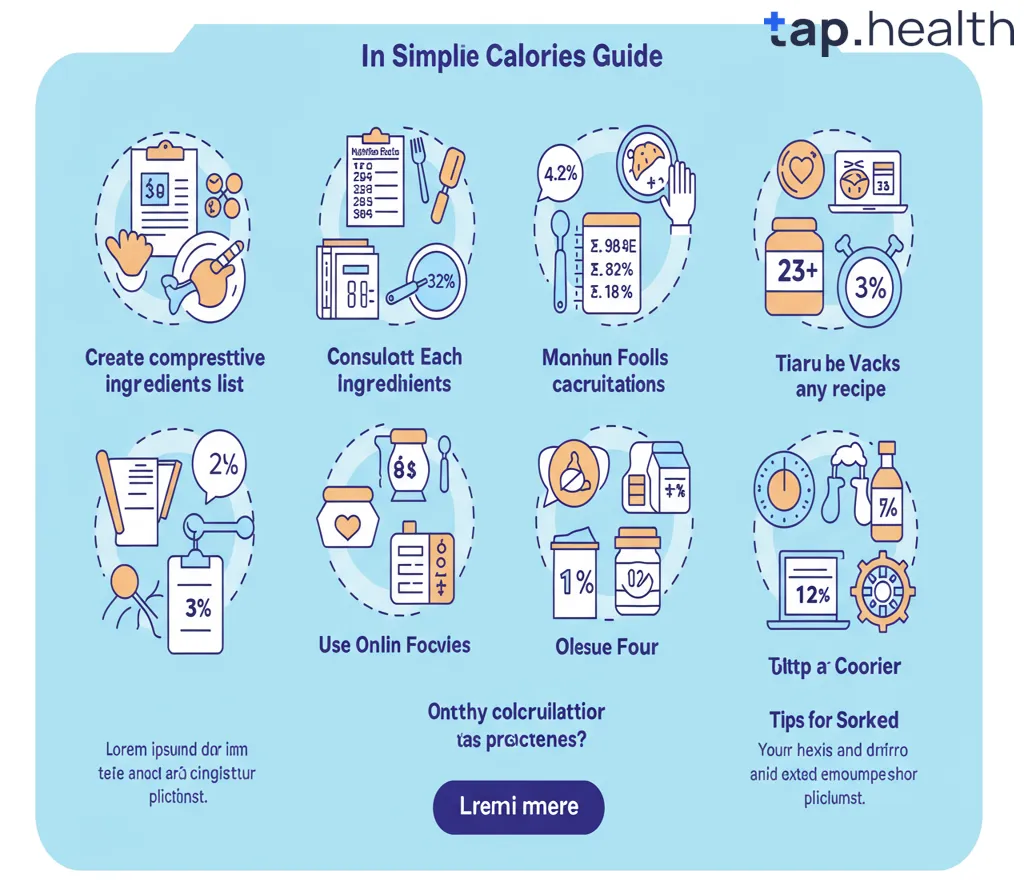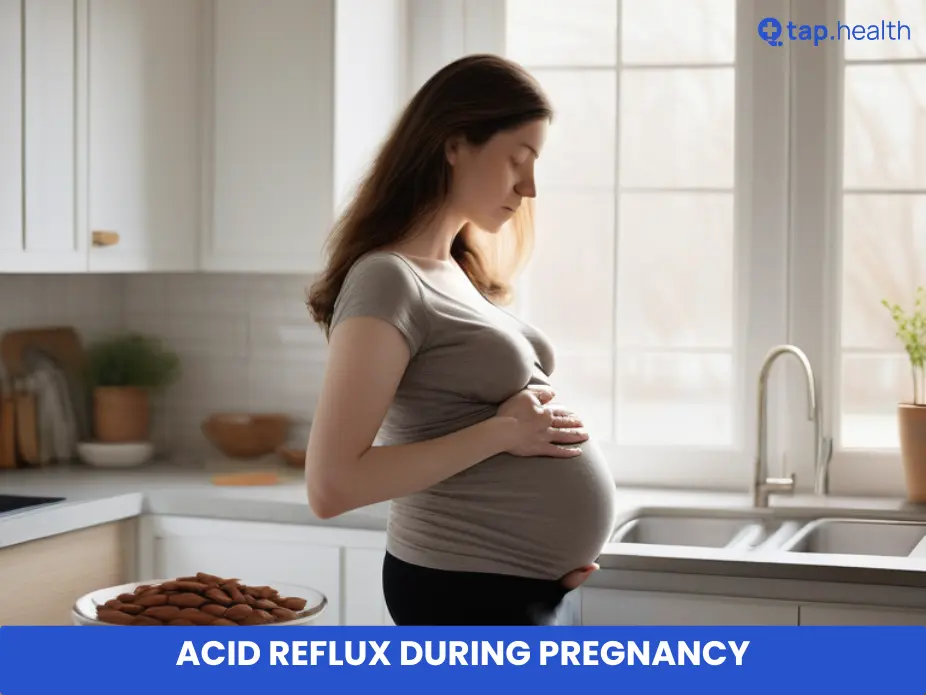Whether you’re trying to lose weight, gain muscle, or maintain a healthy lifestyle, understanding the calories in your recipes is essential. By knowing how many calories you’re consuming, you can make more informed decisions about your diet and improve your eating habits.
In this guide, we will explain how to calculate the calories for a recipe. We’ll go over easy-to-understand methods to estimate the calories in your dishes, from ingredient breakdown to portion control. You’ll also find tips on using online tools and apps to make this process even simpler.
Why is It Important to Calculate Calories for a Recipe?
When cooking at home, it’s easy to overlook how many calories are in each meal. But, if you’re trying to manage your weight or follow a specific nutritional plan, knowing the calorie content of your food is key. Here are some reasons why you should calculate calories in your recipes:
- Portion Control: By knowing the calories in a recipe, you can control how much you’re eating and avoid overeating.
- Health Goals: If you’re aiming to lose, gain, or maintain weight, calculating calories can help you stay on track with your goals.
- Balanced Diet: Understanding calorie content can ensure that you’re getting the right balance of macronutrients (proteins, fats, and carbs) to support your body’s needs.
- Accurate Tracking: If you use a calorie-tracking app, calculating the calories in your recipe will give you more accurate data for your daily log.
How to Calculate Calories for a Recipe?
Calculating the calories in a recipe involves determining the calories in each ingredient and then adding them up. Here’s a step-by-step guide on how to do it.
Step 1: Identify the Ingredients in Your Recipe
The first step is to list all the ingredients used in your recipe. This includes everything from the main ingredients (e.g., chicken, vegetables, pasta) to oils, seasonings, and any other small additions (e.g., salt, sugar, or herbs).
Step 2: Find the Calorie Content for Each Ingredient
Once you have your list of ingredients, you need to find the calorie content for each one. You can find this information on food packaging or by looking up each ingredient online. Trusted databases like USDA’s Food Database or apps like MyFitnessPal provide reliable information on the calorie content of various foods.
Example of Calorie Content Lookup:
- 1 cup of cooked rice = 200 calories
- 1 tablespoon of olive oil = 120 calories
- 1 chicken breast (4 oz) = 180 calories
If you’re using a recipe that calls for a combination of ingredients, break it down into individual components. For example, if the recipe calls for 2 tablespoons of olive oil, you would calculate: 2 tablespoons×120 calories per tablespoon=240 calories from olive oil2 \text{ tablespoons} \times 120 \text{ calories per tablespoon} = 240 \text{ calories from olive oil}2 tablespoons×120 calories per tablespoon=240 calories from olive oil
Step 3: Add Up the Total Calories
After finding the calories for each ingredient, add them together to get the total calories for the recipe.
Example:
Let’s say you’re making a recipe that includes the following:
- 1 chicken breast (4 oz): 180 calories
- 1 cup of cooked rice: 200 calories
- 2 tablespoons of olive oil: 240 calories
The total calorie count for the entire recipe would be: 180 (chicken)+200 (rice)+240 (olive oil)=620 calories for the whole recipe180 \, (\text{chicken}) + 200 \, (\text{rice}) + 240 \, (\text{olive oil}) = 620 \, \text{calories for the whole recipe}180(chicken)+200(rice)+240(olive oil)=620calories for the whole recipe
Step 4: Determine the Number of Servings
Next, determine how many servings the recipe will make. This will allow you to calculate the calories per serving. For example, if your recipe serves 4 people, divide the total calorie count by the number of servings: 620 calories÷4 servings=155 calories per serving620 \, \text{calories} \div 4 \, \text{servings} = 155 \, \text{calories per serving}620calories÷4servings=155calories per serving
Step 5: Adjust Based on Portion Size
If you want to adjust the serving size (e.g., for a smaller or larger portion), recalculate the calories per serving by dividing the total calories by the new number of servings.
How to Use Online Tools and Apps to Calculate Calories
If you want a quicker way to calculate calories, there are many online tools and apps that can help. These tools automatically calculate the calories for each ingredient in your recipe and give you the total for the entire dish. Some popular calorie counting apps include:
- MyFitnessPal: You can enter each ingredient, and the app will provide the calorie count for the entire recipe. It also helps track your daily intake.
- Yummly: This app provides nutritional information, including calorie counts, for various recipes. You can search for recipes and adjust portion sizes.
- Chronometer: This tool provides detailed nutrient information, including calories, for individual ingredients and whole recipes.
Using these tools saves time and ensures accuracy when calculating calories for your recipes.
Tips for Accurate Calorie Calculation
Here are a few tips to help you calculate calories more accurately when cooking:
1. Measure Your Ingredients
To get precise calorie counts, always measure your ingredients. Use a kitchen scale for things like meat, produce, and grains, and measuring cups/spoons for liquids and powders.
2. Double-Check Serving Sizes
Many food packaging and databases provide calorie counts for specific serving sizes (e.g., 1 tablespoon, 1 cup). Make sure you’re using the correct serving size when you’re looking up calorie content.
3. Account for Cooking Methods
Cooking methods can affect calorie content. For example, frying food in oil adds extra calories from the fat. If you’re baking, grilling, or steaming, the calorie count may be different than if you’re sautéing or deep-frying.
4. Don’t Forget Condiments and Additives
Often, sauces, dressings, or condiments are overlooked when calculating calories. These can add significant calories, so remember to factor them in. For example, salad dressing or butter can increase the total calorie count of a dish.
5. Consider Nutrient Density
While calorie counting is helpful, remember that not all calories are equal. Nutrient-dense foods, such as fruits, vegetables, lean proteins, and whole grains, provide essential vitamins and minerals in addition to calories. Focus on overall nutrition rather than just calorie counting.
Common Mistakes to Avoid When Calculating Calories for a Recipe
While calculating calories is a straightforward process, some common mistakes can lead to inaccurate results. Here are a few things to watch out for:
1. Ignoring Portion Sizes
Sometimes, it’s easy to assume that you’re eating one serving when in reality, you’re eating more. Always be mindful of portion sizes and adjust the calorie count accordingly.
2. Not Accounting for Cooking Losses
Some ingredients lose water content during cooking, which can affect their calorie count. For instance, when cooking meat, the fat may render out, changing the final calorie count. Cooking losses should be accounted for if possible.
3. Overestimating Ingredients
When eyeballing ingredients or using too much oil or seasoning, you might end up adding extra calories without realizing it. Always measure ingredients to ensure accuracy.
Frequently Asked Questions (FAQs) on How to Calculate Calories for a Recipe?
How Do I Calculate Calories for Homemade Recipes?
To calculate calories for homemade recipes, list all ingredients, find the calorie content of each one, and add them up. Then, divide the total calories by the number of servings to get the calories per serving.
Can I Use Apps to Calculate Calories for a Recipe?
Yes! Apps like MyFitnessPal, Yummly, and Cronometer can help you calculate the total calories for your recipes. These apps allow you to enter ingredients and adjust servings for a quicker, more accurate calorie count.
How Accurate Are Calorie Calculations for Recipes?
Calorie calculations can be very accurate if you measure your ingredients and use trusted sources for nutritional information. However, variations in cooking methods, ingredient types, and portion sizes can slightly affect the final calorie count.
How Do I Calculate Calories for a Recipe with Multiple Ingredients?
For recipes with multiple ingredients, calculate the calories for each individual ingredient, then add them up. Once you have the total calories, divide by the number of servings to find the calories per portion.
Should I Count Calories for Every Recipe I Make?
Counting calories for every recipe isn’t necessary for everyone, but it’s helpful if you have specific health goals, such as losing weight, gaining muscle, or managing a health condition. It’s an easy way to ensure you’re sticking to your daily calorie targets.
In conclusion, calculating calories for a recipe is a simple process that involves measuring ingredients, finding their calorie content, and dividing the total by the number of servings. Whether you’re trying to lose weight or build muscle, knowing the calories in your recipes can help you make better choices for your health and fitness goals. Use apps, measure accurately, and keep track of your progress to stay on top of your nutritional needs.



